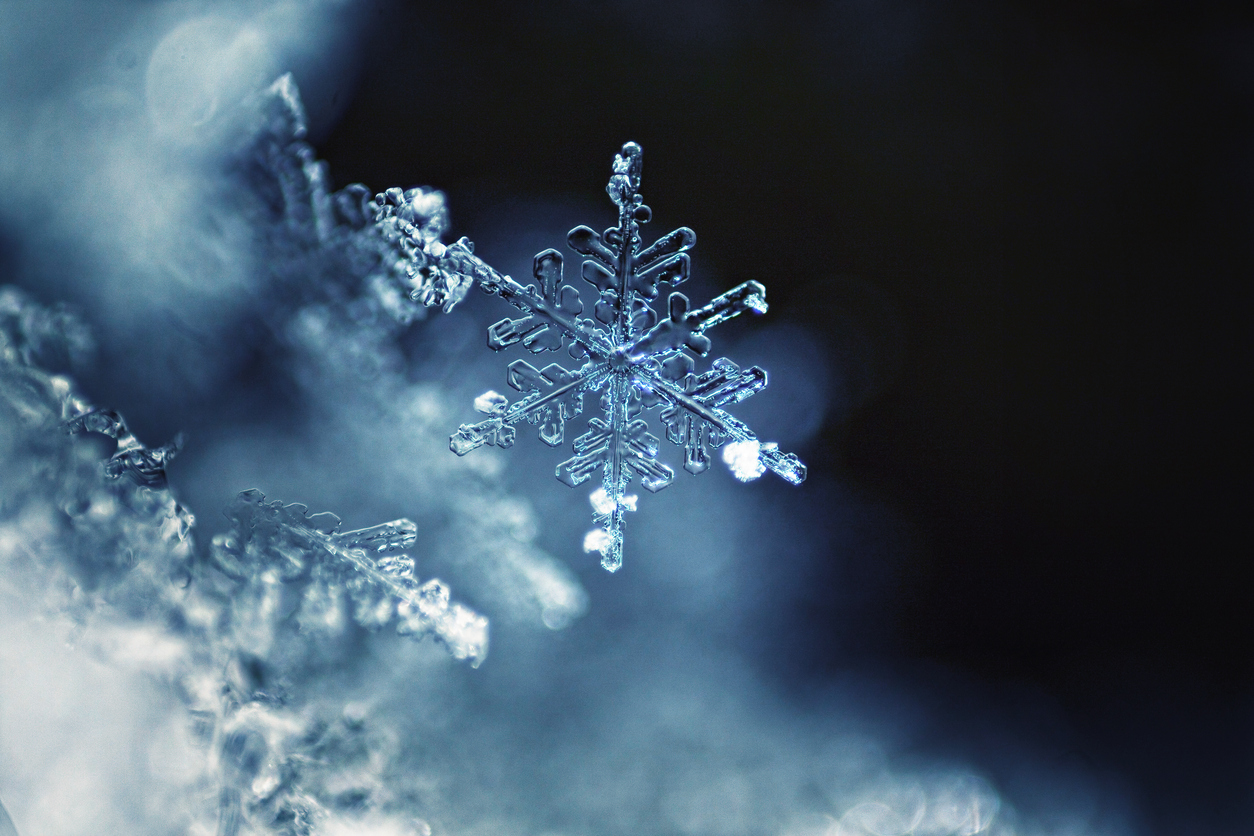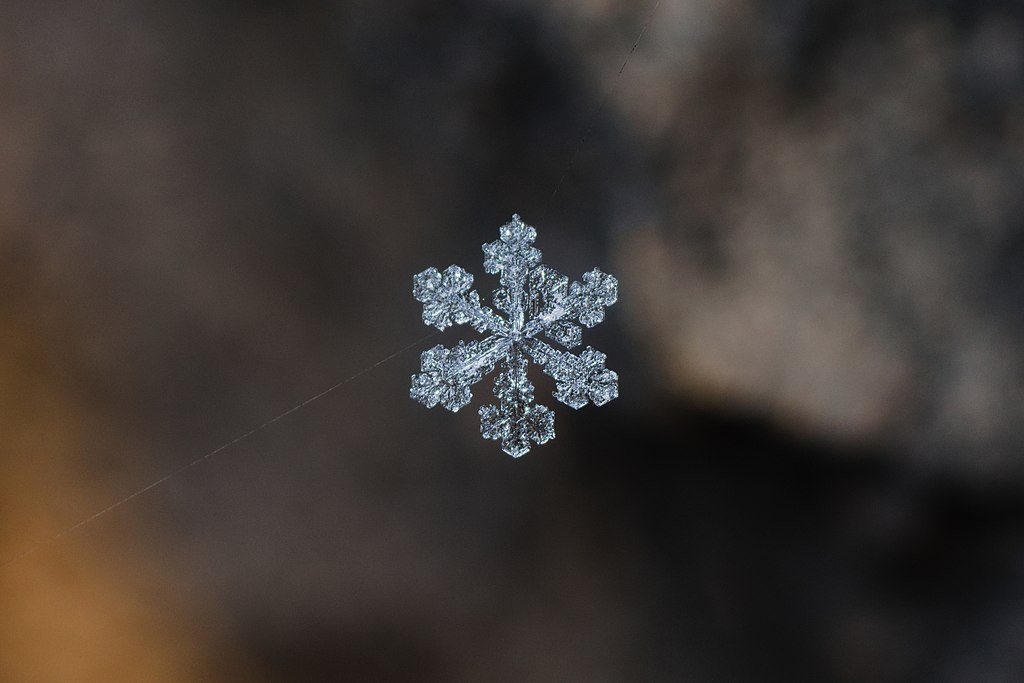
We’ve all heard it—no two snowflakes are alike. However, they all seem to share that same six-sided shape, so what’s going on? Why do they follow the same rulebook for structure but still end up looking totally unique?
It all starts with water molecules.
Snowflakes form when water vapour in the air freezes into ice. The way water molecules bond as they freeze naturally leads to a six-sided shape. It’s not random; it’s chemistry. Each water molecule connects with others at precise angles, and the most stable way for them to lock together is in a hexagon.
So from the very beginning, snowflakes are built with a kind of invisible blueprint that pushes them toward sixfold symmetry. That’s why every snowflake you’ll ever see, no matter how weird or spiky it gets, will still have six arms. It’s baked into the way water behaves.
Symmetry doesn’t mean identical.
Even though all six arms of a snowflake grow out from the same centre and follow the same physics, they don’t always grow at exactly the same rate. That’s where the variety comes in. A tiny temperature shift or puff of wind can throw off the growth on one side and create subtle differences.
It’s a bit like baking six cookies from the same dough in six different ovens. They’ll all be technically the same recipe, but they’ll come out looking slightly different depending on the heat, humidity, or how long they cook. That’s snowflake formation in a nutshell—uniform rules, unpredictable conditions.
The path through the clouds shapes them.
As a snowflake falls through the sky, it travels through different layers of the atmosphere. Temperature, humidity, and air pressure are constantly changing, and each shift leaves its mark on how the flake grows. Every layer adds something new—spikes, plates, ridges, or branches.
This journey is what makes each flake one of a kind. Even two flakes that started next to each other can take slightly different paths, leading to totally different final forms. The further they fall, the more room there is for uniqueness to kick in.
Their shapes reveal weather secrets.
Because snowflakes are so sensitive to their environment, scientists can actually study them to understand what the weather was doing at the time they formed. Different shapes indicate different humidity levels or temperature changes in the cloud layers they passed through.
That means a snowflake is sort of like a weather record etched in ice. It’s delicate, yes, but also filled with data. Meteorologists can use them to piece together cloud conditions and even predict what kinds of snow a storm will bring.

Some grow faster than others.
The outer tips of a snowflake are exposed to more water vapour than the centre, so they tend to grow faster. As the flake develops, the fastest-growing points get even more elaborate, sprouting out into fancier and more intricate shapes.
This uneven growth creates the branching, lacy designs that make snowflakes so beautiful. But it also adds more randomness. A little extra humidity at the right moment can cause one branch to flare out more than the others, breaking the symmetry just enough to make it unique.
They’re not actually flat.
We picture snowflakes as flat little stars, but many of them are actually three-dimensional. Some twist slightly or build up layers like a tiny tower. Depending on the conditions, they can look more like columns, needles, or even capped cups than the classic flake shape.
These variations are all part of the same process, water freezing in different patterns based on the surrounding air. Even in their 3D forms, the six-sided symmetry still holds. It just bends and folds into unexpected designs, like a snowflake that’s been through origami school.
Some never fully form.
Not every snowflake has time to become a perfect, detailed pattern. Some collide with other flakes, get battered by wind, or partially melt and refreeze on their way down. These “imperfect” flakes might look broken or incomplete, but still follow the same basic hexagonal rules.
It’s a good reminder that even nature’s finest creations don’t always turn out picture-perfect. Some snowflakes are scrappy little survivors, shaped just as much by chaos as by beauty. And that’s part of what makes them interesting, too.
Artificial snow can’t replicate the same magic.
The snow you see on ski slopes or from snow machines doesn’t have that same delicate, six-armed structure. It’s more like tiny ice pellets—formed quickly, without the same slow, careful process that natural snowflakes go through.
That’s because artificial snow forms by spraying water into freezing air, not through gradual ice crystal growth in clouds. It does the job for skiing or snowball fights, but it misses out on all the beauty and uniqueness that comes from nature taking its time.
They’re an example of chaos and order working together.
Snowflakes are the perfect balance between structure and unpredictability. The six-sided design is nature’s order—the rulebook that never changes. But within that rulebook, there’s endless room for randomness based on conditions the flake can’t control.
That’s why they’re so fascinating. They remind us that complexity can come from simple rules, and uniqueness doesn’t have to be loud or flashy. It can happen quietly, one snowflake at a time, through tiny differences that no one else will ever see again.